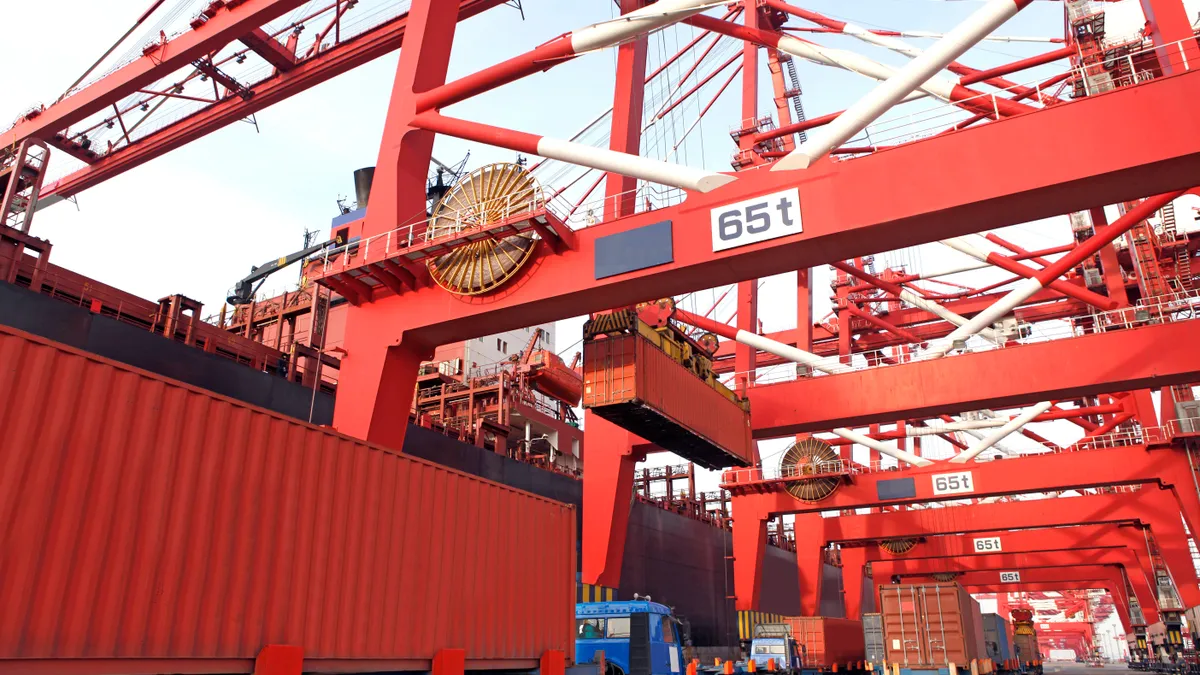Dive Brief:
- The Chinese government has announced plans to levy additional tariffs on $75 billion worth of goods from the U.S. – including certain scrap commodities.
- Starting Dec. 15, aluminum, copper, OCC and mixed paper will be assessed an additional 5% tariff on top of those imposed in 2018. According to the Institute of Scrap Recycling Industries (ISRI), the tariff on unsorted mixed paper – currently banned for import into China – would apply in instances where the material is still obtaining clearance.
- The added 5% would bring the total import tariff for copper and paper to 30% and the total tariff for aluminum to 55%, according to ISRI.
Dive Insight:
The announcement, viewed as "apparent retaliation" for the U.S.'s latest onslaught of planned China tariffs, provoked a negative response from the Trump administration, ISRI revealed in a member alert.
"However, the pledged December implementation date provides some flexibility if the U.S. and Chinese Governments resume negotiations on a trade deal," it added.
According to Adina Renee Adler, ISRI's assistant vice president of international affairs, China's decision to target already-tariffed commodities shows that the government has run out of U.S. products to levy.
The announcement, she told Waste Dive, came "as a bit of a surprise – but it's not devastating to our industry." China's import restrictions have been "far more impactful" on trade, and while tariffs "certainly add another layer" – chiefly by putting U.S. source products at a disadvantage against other countries' commodities – the additional 5% is only an "incremental" increase to previously-imposed tariffs.
While China remains the U.S.'s largest export destination for recovered fiber (followed by India, Mexico, Indonesia and South Korea), exports to China decreased by 24% from January to June 2019 over the same period last year – from 3.8 million metric tons to 2.9 million metric tons. 2018 volumes were, in turn, significantly below previous years, as reported by Resource Recycling.
This trend may be attributable primarily to quota restrictions. The Chinese government, Adler said, is permitting smaller and smaller quantities of imports – "so it's not that demand is shrinking, it's that the government is interfering in the marketplace."
Tariffs, she noted, "probably don't help much – because the Chinese government will say, 'Here's your license, here's the amount you can import and you can import from anywhere.' So if you don't want to pay for extra tariffs, you might go somewhere else."
However, she stressed, the fact that Chinese importers have continued paying for tariffed commodities – trade for aluminum has, in fact, increased over the past several months – indicates continuing demand for "premium" material.
"We're hopeful that the U.S. and Chinese governments will continue to negotiate a path forward to resolving the trade war," Adler said – but in the meantime, "we're not relying on the Chinese market at all like we had been before all the import measures were put in place.
"Our industry has already been developing markets elsewhere for months … and we're not going to discontinue that ever," she said. "So, yes, we'll see less material going to China as a result of these new tariffs – but that's already been happening."
Tariffs on scrap commodities may, in fact, amount to small skirmishes in the face of another looming issue: China's 2020 deadline for a complete ban on scrap imports is fast approaching.
Still, ISRI informed members earlier this month, a revised version of the Chinese government's solid waste management plan appears to walk back its previously stated intent to "achieve zero imports of solid waste by the end of 2020." While the new proposal continues to emphasize that it is "forbidden to dump, pile up or treat any solid wastes from abroad within the territory of China," it also asserts that the country "shall gradually and basically realize zero import of solid wastes."















